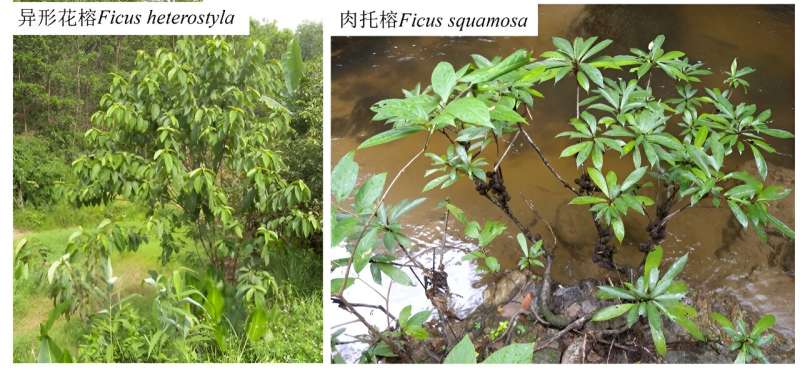This article has been reviewed according to Science X's editorial process and policies. Editors have highlighted the following attributes while ensuring the content's credibility:
fact-checked
trusted source
proofread
Two closely related fig species show signatures of hybridization at climatic margins

Hybridization plays an important role in biological evolution. However, it is not clear under what ecological conditions hybridization may be favored. Assessing hybridization among species pairs that occupy geographically extensive contact ranges may provide a better understanding of when barriers to gene flow are likely to be weakened and, subsequently, where a significant proportion of diversification is likely to occur.
In a study published in Plant Diversity, researchers from the Xishuangbanna Tropical Botanical Garden (XTBG) of the Chinese Academy of Sciences reported that two closely related figs with a longitudinal contact belt across Southeast Asia demonstrated reproductive isolation throughout their core contact range before hybridization signatures increase at the northern climatic margins.
The researchers used a comprehensive latitudinal sampling of closely related tropical Ficus heterostyla and F. squamosa. They aimed to detect patterns of clinal change in interspecific hybridization and introgression.
Using nuclear microsatellites from extensive population sampling across a broad contact range, the researchers examined spatial hybridization signatures. They found that the two closely related dioecious figs, which share an extensive contact range, showed signatures of hybridization only at their climatic edges. Signatures of hybridization increased significantly toward higher latitude climatic margins.
The researchers then examined detailed natural history data surrounding the two focal species and their regional abiotic circumstances. They found that biotic factors such as growth form, phenology, and population density mediated the direction of interspecific gene flow.
"We believe this is the first in-depth geographic study of this phenomenon and suggests that climatic margins may be hotspots for hybridization potentially leading to speciation events," said Huang Jianfeng, first author of the study.
More information: Jian-Feng Huang et al, Enhanced and asymmetric signatures of hybridization at climatic margins: Evidence from closely related dioecious fig species, Plant Diversity (2023). DOI: 10.1016/j.pld.2023.08.003
Provided by Chinese Academy of Sciences


















